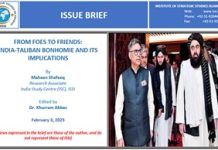The Russian president ordered its nuclear deterrence forces to high alert on February 27, 2022. This came in the wake of the Ukraine crisis that started on February 24, when the Russian President announced a “special military operation” in Ukraine. The announcement was accompanied by a warning that “to anyone who would consider interfering from the outside – if you do, you will face consequences greater than any you have faced in history.”[1] Moving nuclear forces to high alert has raised a number of questions, doubts on what it actually means as well as fears that the Ukraine crisis may escalate to a nuclear level. Thus, it is important to look at what it means, how the US and West sees the nuclear alert status and how they have responded.
Russian President Putin called the Defence Minister, Sergei Shoigu, and military Chief of Staff, Valery Gerasimov, to a public meeting and told them to “transfer the deterrence forces of the Russian army to a special mode of combat duty” in response to “aggressive statements” over Ukraine by NATO leaders. There has been quite a debate among analysts on what this entails in practice. Most agree that this may put the nuclear forces on a higher state of readiness. Others like the British Defence Secretary, Ben Wallace, said that it was a term not included in the Russian doctrine but was most likely meant to scare the West and “remind the world he’s got a deterrent.” [2] Wallace has also speculated that Russia might use tactical nuclear weapons.















